Haunted Grimm House
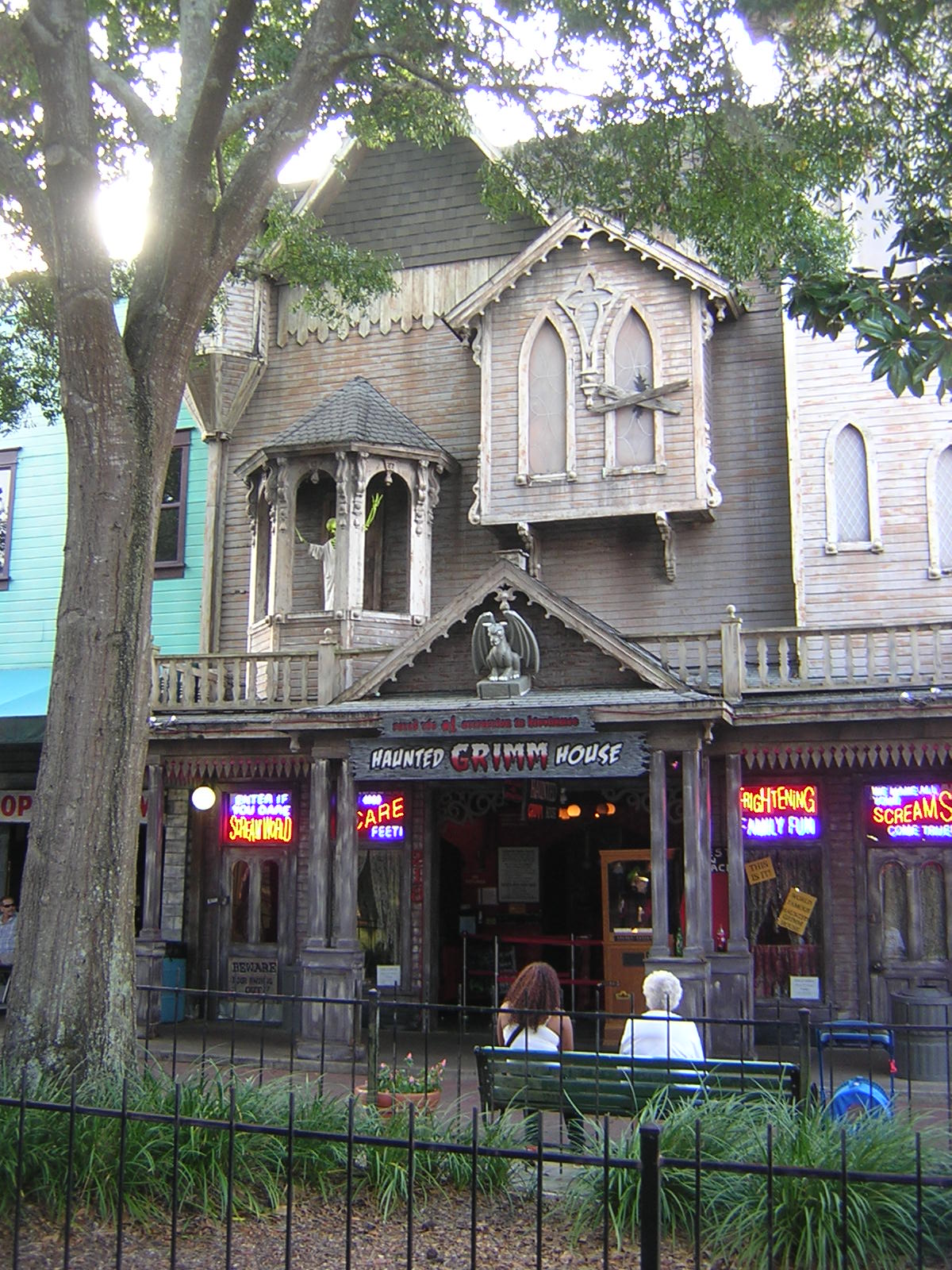
Old Town looks like it’s always been there and that’s the point.
The shopping center opened on December 12th, 1986 but played a few decades older. Its boxy storefronts and ice-cream shades belong to Old Florida. Weekly classic car shows, no Saturday night yet missed, complete the image. For its first year, the only traditional amusements were an antique carousel and horse-drawn carriages. Little Darlin’s Rock ‘n Roll Palace, the hottest club on 192 with a 24-foot-tall jukebox out front, covered the adult entertainment. Besides the 1987 addition of a Ferris wheel built in 1928, “The Town That Time Forgot” stayed the course, an easy, breezy way to spend an afternoon and the only place in town where Pepsi still cost a nickel.
In November 1992, a year after being re-dedicated to radio legend Wolfman Jack, the Palace shut its doors. The jukebox came crashing down. Rock ‘n roll was paved over and buried by a newer, bigger Ferris wheel. Old Town had a new direction.
1993 turned the shopping center into an entertainment complex. A bungee jump. A slingshot. Go-karts done up in neon. The Elvis Museum was replaced by an indoor playground. And last but definitely not least, Old Town opened its “historic” haunted house.
Like the other 50-plus shops and restaurants, the only thing historical about the Haunted Grimm House was its paintjob. The moldering Victorian manor stood out amongst its pastel neighbors like an open grave. According to lore, however, cleaning the place up was out of the question.
The Grimm family funeral parlor opened for business in 1886, a century before Old Town, and business immediately boomed. It gave the Grimms a monopoly on the dead as the only such operation in the county, but death is no match for the market. In 1929, the Great Depression shook the family to pieces. The oldest son gave into his mania. The butler, his homicidal tendencies. The wrong kind of corpses suddenly filled the house. The estate was left to rot, a scar in the swampland, a ghost story best forgotten. Shame, then, that Old Town was built on the exact same site. As superstitious consolation, the planners left Grimm house exactly as-is, no leasing allowed. When the legend got too large to keep from visitors, management started allowing exploration on the grounds Old Town is not responsible for anything that happens within.
Within was 4,000 square-feet of terror, divvied up into more than 20 rooms across two stories. Given the horde of ghastly characters on Old Town’s promenade, sometimes 10-strong, pedestrians would be mistaken for expecting just as many live threats inside. Though more were welcomed, the Haunted Grimm House only needed two actors to operate, keeping pace with guests via hidden corridors and popping out of boo holes as needed. Eventually, skeleton crews became the rule instead of the exception. But the street performers never stopped spooking and the Grimm House never stopped updating.
The earliest configurations have been lost to time, if much record of them existed at all; video recording has always been strictly forbidden. In its later years, the Haunted Grimm House separated its scares by elevation. The first floor was swallowed by complete darkness, forcing guests to feel their way out. Once the disorienting tricks had been exhausted, stairs led to a more traditionally scary second floor. Long halls lousy with open windowsills provided ample opportunity for jumpscares. Individual scenes could and would be reworked to keep up with horror’s cutting edge or at least stay close behind - a Saw homage hung around long after the franchise cooled off.
For most of its life, a boast hung proudly beneath the Grimm House awning - “Rated The #1 Attraction in Kissimmee.” Whoever said and when didn’t matter. It was true once and, in this frozen place, forever. Even as the warning signs piled up, like half-off admission with any purchase in the adjoining magic shop, the haunt seemed immortal.
The Haunted Grimm House shuttered in December 2012. Reasons for its ignominious end, after 19 years of service, were never disclosed, but it was likely another sign of the times. Seasonal events stole more thunder by the year - even Old Town got in on the action with free scarezones and costume contests during October weekends. It only made sense for management to ask the producer of its Halloween festivities if he knew anyone who might want to lease a haunted house.
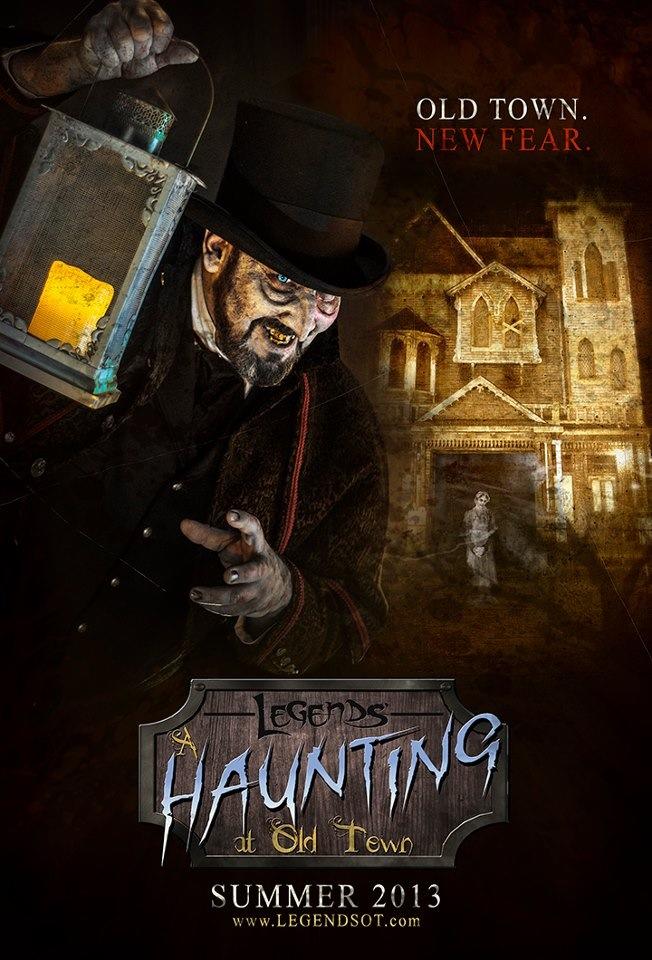
Dan Carro, veteran of both Terror On Church Street and Skull Kingdom, gave them two names: Jim Shackelford and Jay Westerman. The duo owned a production and design company called Haunt 2013 out of Dallas. After a few phone calls, Haunt 2013 uprooted to Kissimmee and Legends Dark Amusements.
Though the façade remained largely unchanged, Legends: A Haunting At Old Town gutted Grimm to the nails. The magic shop next door was absorbed in the deal, adding 2,000 more square feet to the house along with a dedicated gift shop. The new haunted attraction opened in October 2013, just nine months after pen touched paper.
Old Town had a new ghost story and ghost, Archibald Ashdown, an insidiously charismatic mortician played by Carro himself. In 1889, Ashdown claimed his stake with Ashdown and Son’s Undertakers. He took great pride in his work and that’s where the trouble started. Before long, Ashdown exhausted nature’s supply of dead bodies. Like all great entrepreneurs, he innovated, adding murder to the offered services and turning healthy locals into “Twitchlings.” A few tortured souls screaming through the walls are a small price to pay to keep the family business afloat.
Along with the new shtick came a new pace. Groups of six were ushered room-by-room through an impressive recreation of a funeral parlor. The early goings made practical sense - waiting rooms, offices, the morgue - but as soon as they reached the attic, it all went to hell, ending with an all-out assault in the Ashdown and Son’s viewing chapel.
The theatrical edge of Legends earned high marks across the board. Once again, for all the technological wizardry involved, it was the actors that made it work. In 2014, Orlando Weekly awarded it Best Local Haunt, calling its brand of chills a “horrific home-cooked meal” in welcome contrast to theme park fast food.
Not long after opening, Legends added a genuine ghost tour - The Ghosts of Old Town - for those more interested in Central Florida’s nonfictional spirits. Not long after opening, it seemed as if Old Town might join the list.
In 2013, owners of the shopping center filed for Chapter 11 bankruptcy to restructure its debt. Recent additions like a ropes course hadn’t torn tickets as hoped. The following April, Travel Corporation bought the operation outright, bringing it full circle. Under the aegis of chief executive Brett Tollman, son of Old Town founder Stanley Tollman, the “The Town That Time Forgot” wouldn’t be. A multi-million dollar renovation plan sought to fill in the empty storefronts, declutter its carnival rides, and welcome neighbor Fun Spot with open arms and fences.
But the growing pains were too much for some tenants to bear. Legends: A Haunting at Old Town ran out its lease in January 2016. Uneven attendance, only exacerbated by construction, did it in. One-off special events in the house, like a werewolf makeover for Full Moon Fury, couldn’t turn the tide. The year-round nature made more permanent redesigns all but impossible.
On October 1st of the same year, Mortem Manor opened in its place. Like Legends, it has a lineage. Owner Ted Sobek made his bones with Hundred Acres Manor, deemed “Pittsburgh’s Best Haunted House” by HauntWorld Magazine. Mortem earned a similar honor from the Travel Channel as “One of America’s Scariest Haunted Houses.”
The Manor is still open, still scary. For just $5 - $3, when lumped with house admission - visitors can even experience a live burial. For many repeat visitors to Old Town, though, the strangest sensation remains out front, in the fresh Florida air. The Victorian façade peels as it always has, nearly 30 years on. Some won’t even notice the name above the foreboding door has changed, once or twice. It’s enough to make you think it’s always been there.
At Old Town, that’s the point.
Mystery Fun House
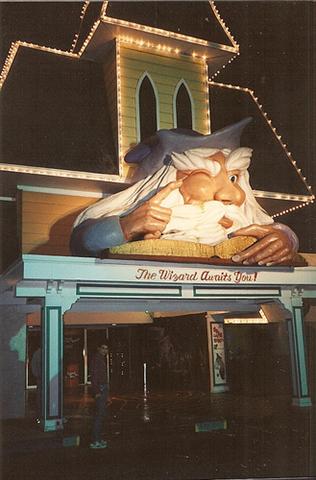
Before there was Halloween Horror Nights, before there was even Universal Studios Florida, there was the Mystery Fun House.
In 1971, Walt Disney World started a slow gold rush. There was money to be made in the Central Florida swamps. It was just a matter of how and, given how long it took the surrounding infrastructure to expand, when.
Major Realty and Gulf Oil Real Estate waited for no man or mouse. In 1972, the pair staked their claim eight miles north of the Magic Kingdom with a 2,700-acre plot of not much. Across the road, they opened a sprawling preview gallery - 53,000 square feet - to properly sell the dream.
The Florida Center was a closer cousin to Walt’s Epcot than Epcot itself. The planned community worked as a self-sustaining ecosystem, with housing for 50,000, jobs for 35,000, and lodgings for 10,000. It would’ve offered a solid foundation for Orlando’s fledgling tourism industry. The gallery even showed off one of the area’s earliest coming attractions - SeaWorld, primed to open late the following year.
But along with Shamu and friends, 1973 brought the worst financial crisis since the Great Depression. Markets crashed. Gas prices soared. Jobs disappeared. The American dollar was barely worth the paper it was printed on. Major and Gulf saw the writing on the wall and sold their land, leaving only the preview center as a memorial.
David Siegel, the eventual founder of Westgate Resorts Ltd. and CEO of Central Florida Investments, was selling land over the phone when a proposed fun house crossed his radar. Looking to branch out from real estate, he joined the project as co-owner. Jack Spangler, vice president of Central Florida Investments, would manage the attraction until its closing day.
On March 28th, 1976, the Mystery Fun House opened at the corner of Major Boulevard and Grand National Drive. There was so little around that contemporary descriptions could only place it somewhere between I-4 and State Road 435. Admission was $2. Besides the walkthrough itself, visitors could play an indoor miniature golf course and peruse the Mystery Fun House Magic Shop, designed by former Disney magician Dan Stapleton.
In its first incarnation, the Fun House spanned ten distinctly themed rooms. Magic and illusion were the names of the game - quoth the ghost host, “Expect the unexpected.” Willie Wabbit, an animatronic bunny complete with red-velvet smoking jacket, kept the mood light. A hall of mirrors disoriented. A foam-floored “Moonscape” delighted. Rustic shacks skewed at impossible angles. Round corridors spun endlessly. A handprint offered electronic fortunes. It may not sound scary now, but the all-powerful Wizard had some mean tricks up his considerable sleeve - immediately after the mirror maze, guests wandered into a dark, silent room randomly interrupted by the sound of glass shattering.
In 1983, Central Florida Investments bought out the remaining stakeholders in Mystery Fun House for $800,000. Now the sole owner, Siegel took a more active role in its operation, overhauling it into a complete destination for family fun.
Five more rooms were added onto the walkthrough. Outdated gags like a disco dance floor got replaced with newer, spookier exhibits. A full-fledged Chamber of Horrors was added, complete with torture chamber and special-effect werewolf transformation. Ancient temple floors opened underfoot, revealing deadly spikes separated by perilously thin glass. An Egyptian tomb took over the old shack, adding some handsy mummies to the mix. The Wizard’s Inner Sanctum, a laser light show in the beginning, became his “Theater of Horror.” Fun never left the equation, but Mystery became the key word. It was Central Florida’s haunted house primordial, severed heads and all.
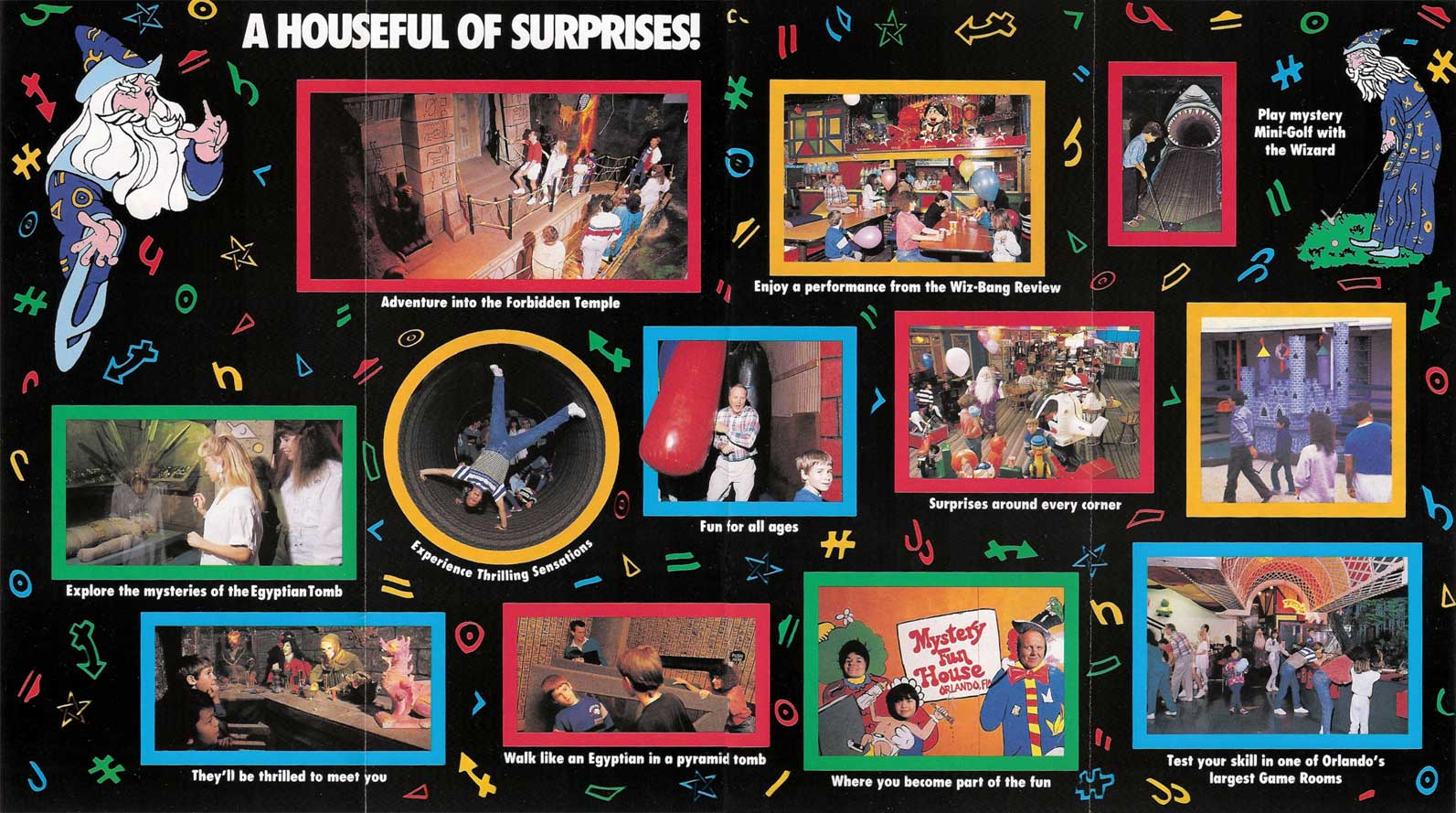
But there was now plenty to do for the squeamish. From the Tivoli Gardens common area, visitors could enjoy The Wizard’s Electronic Games, catch a magic show, test their mettle at outdoor miniature golf or their aim at Starbase Omega, an attached laser tag arena.
Some ad copy deemed the Mystery Fun House “World Famous.” Whether or not that’s true, it did star in a major motion picture.
The adjacent land once owned by Major and Gulf was eventually bought by MCA in 1979. The company had been considering an eastern equivalent of its combination movie studio-theme park for a while and the location was too good to pass up. “Universal City Florida,” as it was known at the time, would be open for paying customers and film crews by Labor Day 1984.
Several years of financial reluctance and unexpected competition from Disney, the project became Universal Studios Florida and 1984 became 1990. To get some early return on investment, the production facilities were finished first. With the filming of Psycho IV: The Beginning delayed so that park guests could watch it live, Ron Howard took point and broke in the soundstages with 1989’s Parenthood. Instead of faking a pizza arcade for a pivotal birthday party scene, producers simply made use of the Mystery Fun House’s recently added Chuck E. Cheese-grade animatronic show.
Despite the high-profile cameo, the Fun House struggled in the shadow of Universal Studios Florida. It did lure some curious travelers across the massive parking lot, but that trickle dried up when the lot became a 9,051-car garage in 1996.
By 2000, the Wizard was nearly out of tricks. Even at an all-inclusive $10.85 price point, tourists weren’t interested. Siegel refuted claims its days were numbered but told the Sentinel the gory truth: “It’s just not justifying being on a valuable piece of real estate.” Soft plans were made to sell the walkthrough and suture the leftovers - golf course, arcade, Pizza Hut - into a smaller attraction.
On February 18th, 2001, it all closed. Central Florida Investments wanted $6 million for six acres. To date, the land has not been sold. The Mystery Fun House became a training center for Westgate Resorts, then a discount ticket center. Hurricane Irma ravaged the structure in 2017 and it hasn’t been inhabited since. The miniature golf course faded and the tangled, steel knot that used to be Starbase Omega rusted until 2019, when bulldozers finally laid them to rest.
The Mystery Fun House wowed 15 million visitors across 25 years. For most of them, the Wizard loomed over the entrance with a permanently sculpted wink. Neither the Wizard nor his perch remain, but the mock-mansion exterior survives in the original banana yellow. To those who remember the wink, it means something different now. Presto chango - two decades later, nothing’s left and nothing’s changed. The Wizard’s last act of disillusion, still performing it daily just across the street from the Universal Orlando parking garages.
Haunted Mansion
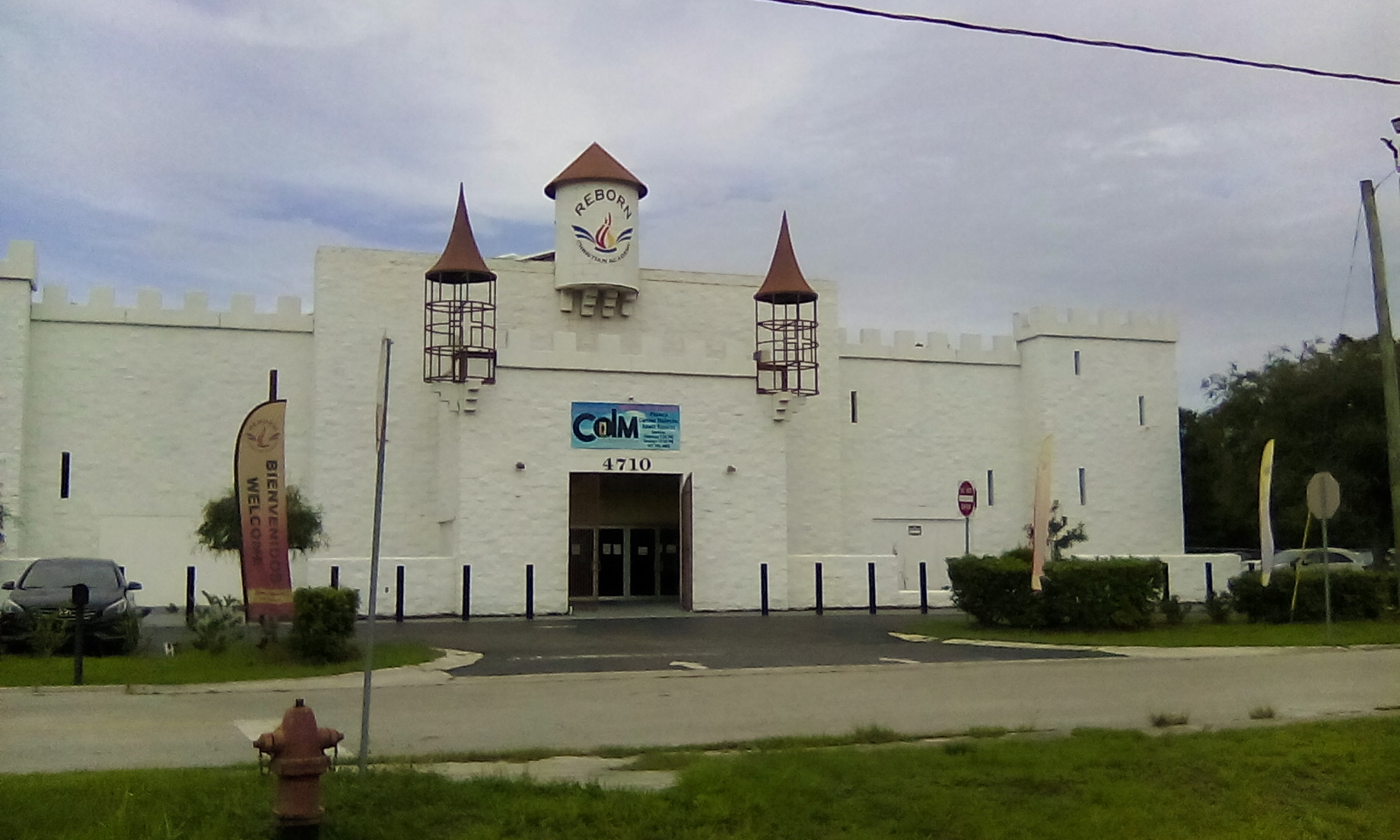
The final ghost house on this list is the shortest, briefest, and most definitive.
Enterprising Ohio haunter Tom Godard was meant for the business. Jeffrey Dahmer signed his high school yearbook. He lived in a haunted farmhouse famous for an ax murder. If local zoning commissions didn’t hassle him about his annual trail, The Haunted Hill Farm, Godard might not have moved in the first place. But frustration got the better of him and, at either the best or worst possible moment, he heard the siren song of Highway 192.
A foreboding castle appeared at Mile Marker 13, beside the McDonald’s and in front of the go-karts. By Halloween 1997, what was once a failed t-shirt stand became the Haunted Mansion, no relation and nevermind the battlements.
Just past the portcullis, albino pythons curled under glass. They were the first of many creepy, crawling exhibits, including but not limited to Egyptian tomb bats and pygmy rattlesnakes. But live entertainment was only part of the fun. Tom’s $7 million Mansion had something for all morbidly curious tastes.
The 20-minute walkthrough adhered to the Fun House model of discombobulation, though stars like Frankenstein’s monster and Norma Bates made their appearances. Adults got in for $9 and kids for $6, but a toned-down version of the experience was offered before 5 p.m. for just $5.
Godard’s true claim to fame, though, was his museum of oddities. Worth an alleged $1 million in its own right, the collection was astounding in every sense of the word. Six genuine skeletons. A full funeral coach. Shrunken heads. Fiji mermaids. Two-headed calves. An authentic vampire-slaying kit plus coffins, one used by inauthentic vampire Barnabas Collins in Dark Shadows. Other film and TV memorabilia included a facehugger from Aliens. The centerpiece was an electric chair, well-used, that allegedly kept some tormented ghosts around.
Besides the main attraction and the museum, the Haunted Mansion had enough room for an arcade, a gift shop, and hope. Godard was already talking expansion on opening day, dreaming out loud about a fully functional dark ride.
By Halloween 1998, he adjusted his aim. The museum doubled to 3,000 square feet and the extra room taken up by Halloween paraphernalia, like vintage trick-or-treat buckets. The Mansion already sold monster masks, but Godard announced plans for a dedicated costume shop to take up an additional 2,500 square feet.
The Haunted Mansion didn’t make it to Halloween 1999.
The black-and-blue masonry was painted green to complete its transformation into Alligator Alley at the Castle, a country-western bar that saw no need to change the decor. Despite its obvious identity crisis, the Alley lasted longer than the Mansion. But, as tourists stuck closer to the theme parks and locals looked elsewhere for their libations, the mechanical bull stopped bucking.
In 2013, the castle became Reborn Christian Academy, a K-12 school accepting students to this day. The parapets still proudly stand.
The Haunted Mansion has been so long outlasted by its own remains that myth outpaced truth. The most common accounts claim it was the first site of Medieval Times, which eventually moved into a bigger castle down the road. Another favorite is an amalgamation of other haunts in the area, some of which have already been differentiated in excruciating detail above. Once in a while, an elaborate and completely made-up lawsuit from Disney condemned it on the grounds of either copyright infringement or castle envy.
None of it’s true, of course, but none of that matters. The ghost house has become ghost story, freely and fundamentally rewritten as needed. There’s not much left to disprove them. Orlando tourism history beyond the big two is a slippery at best and non-existent the rest of the time. At least the castle, the empty lot off I-4, the Victorian ruin at Old Town, and that banana yellow paint are still around to remind the nostalgic and pique the unfamiliar. Then come the questions. Then come the stories.
It’s the only way to bring something back from the dead.
Next vacation, mind the ghosts.
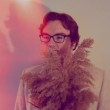
Add new comment